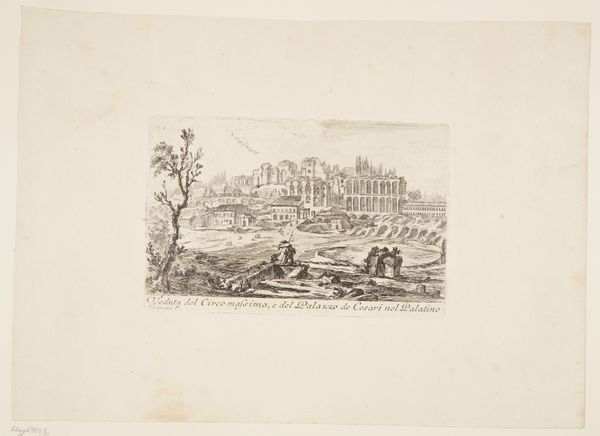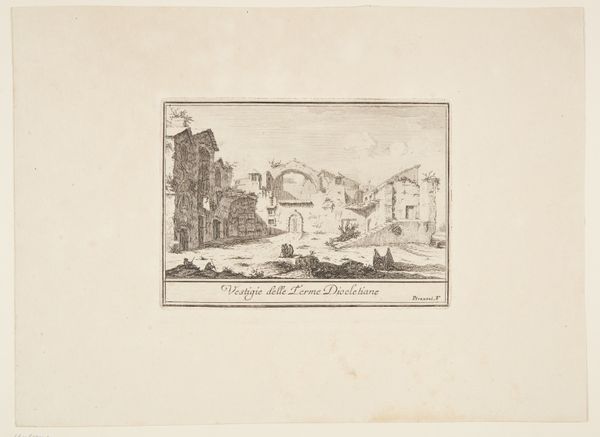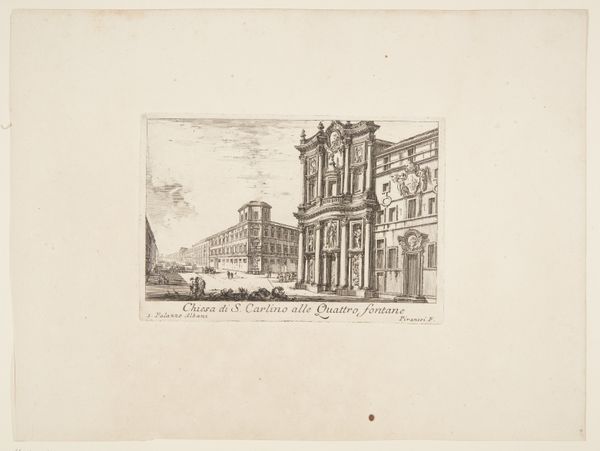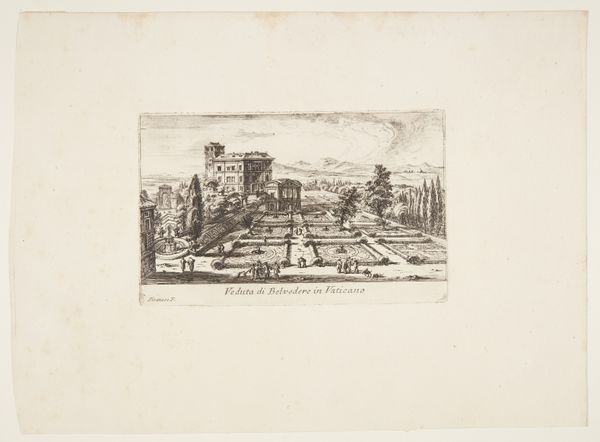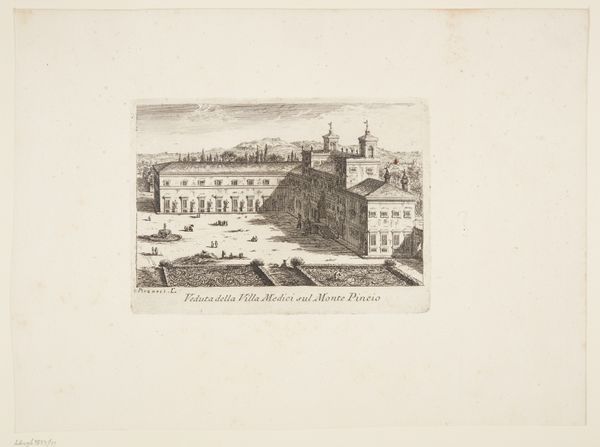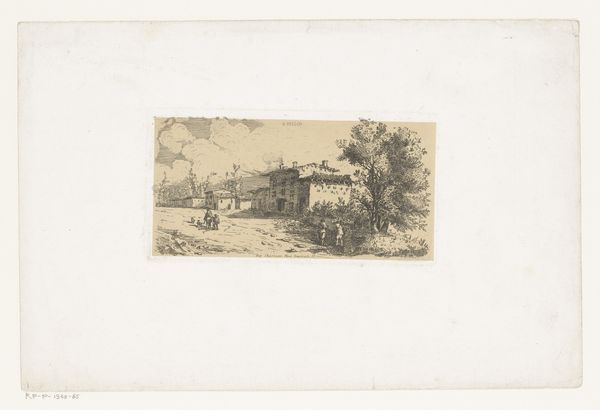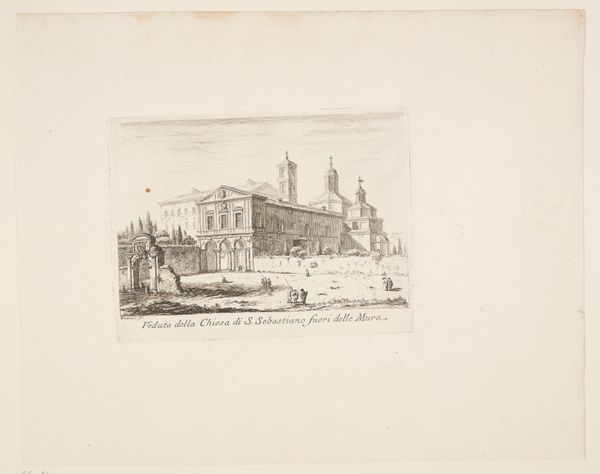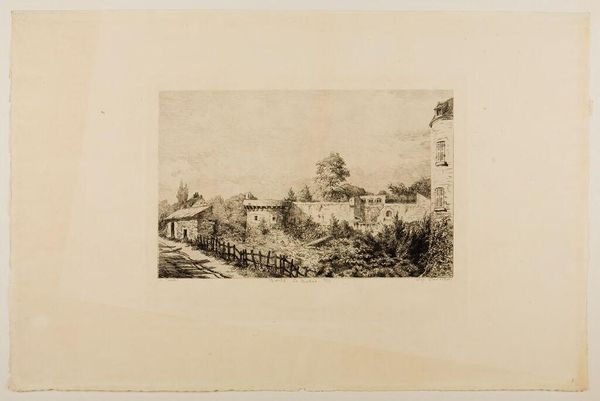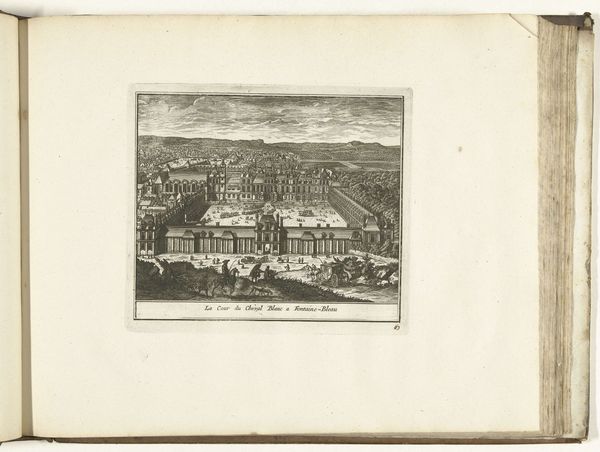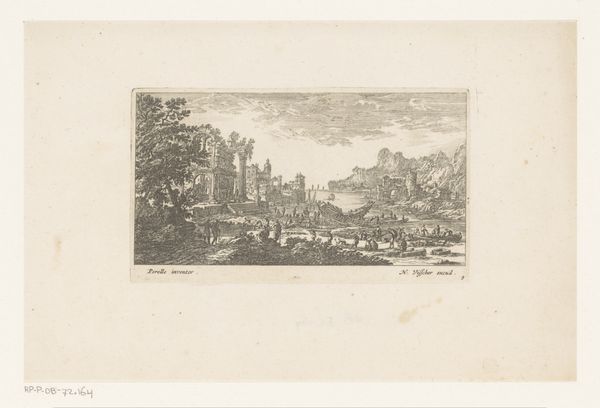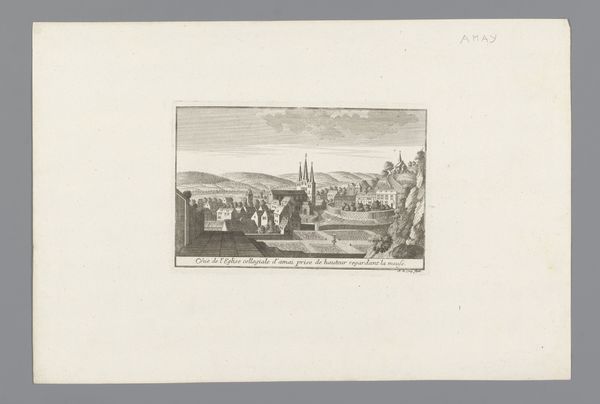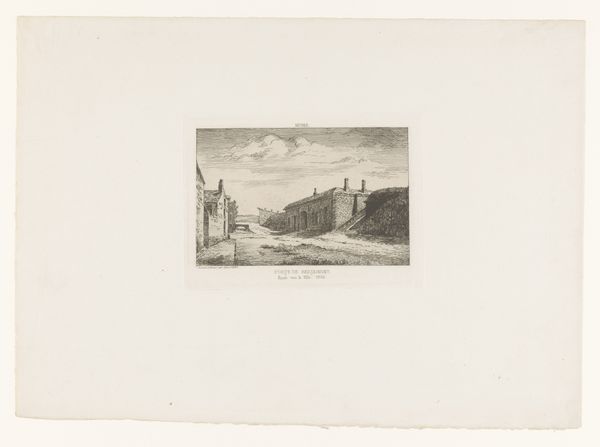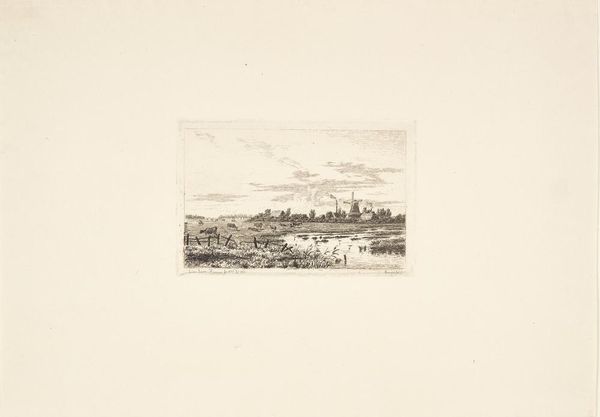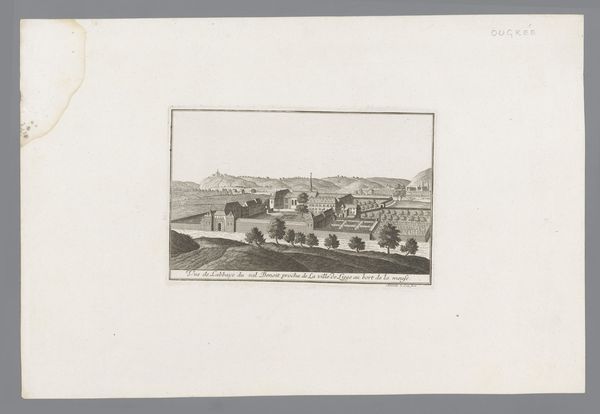
print, etching, engraving, architecture
#
baroque
# print
#
etching
#
landscape
#
cityscape
#
engraving
#
architecture
Dimensions: 107 mm (height) x 191 mm (width) (plademaal)
Editor: This is Giovanni Battista Piranesi's "View of the Villa Ludovisi," an etching and engraving from between 1741 and 1748. It's incredibly detailed for such a small print! I’m struck by how it showcases the grandeur of the villa, almost like a stage set. What can you tell me about it? Curator: It's interesting that you say “stage set." Piranesi’s images weren’t simple records of buildings. They actively shaped perceptions of Rome's architecture. Prints like this made the Villa Ludovisi—a private space—public. Editor: So, he's kind of democratizing access to these exclusive places through art? Curator: Exactly. He capitalizes on the burgeoning Grand Tour phenomenon. Wealthy northerners visited Italy to soak up its culture, and Piranesi fed that desire. Consider this: was he presenting an objective view or crafting an appealing image for consumption? Editor: It's hard to say! He’s clearly emphasizing the impressive scale of the villa and its gardens. It does make you wonder about the lives of the people who inhabited such spaces. Curator: And that's key. These weren't just architectural studies; they were social commentaries. Piranesi depicted the lifestyle afforded by immense wealth and power. In what ways do you think these kinds of images of grandeur served those in power? Editor: Hmm, it's a good question...Maybe the families that were subjects of his work wanted to show off, but also perhaps they believed that patronage of arts demonstrated good civic duty. Curator: Exactly. And for viewers, these prints might evoke envy, admiration, or even resentment toward the aristocracy. Prints circulated widely, fueling diverse opinions. They gave tangible form to discussions about status and hierarchy. Editor: I see. So, it’s not just about architecture; it’s about the socio-political landscape of the time. I’ll definitely look at his work differently now, considering who it was for and what impact it was meant to have. Curator: Indeed, context shifts everything. Understanding the market, the artist's intentions, and the audience's expectations deepens our appreciation. Editor: Absolutely! Thank you for highlighting that perspective.
Comments
No comments
Be the first to comment and join the conversation on the ultimate creative platform.
